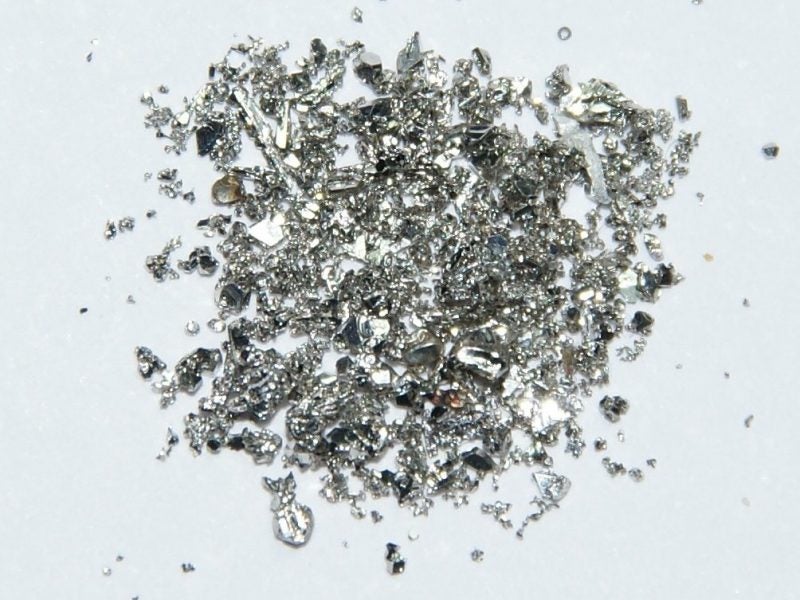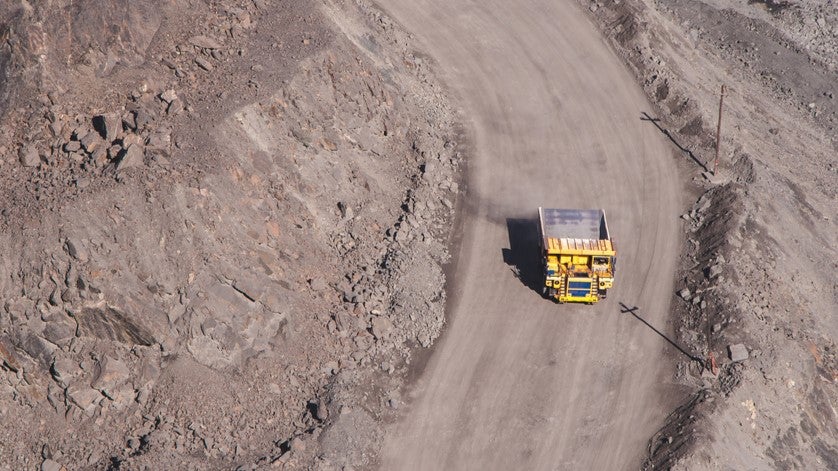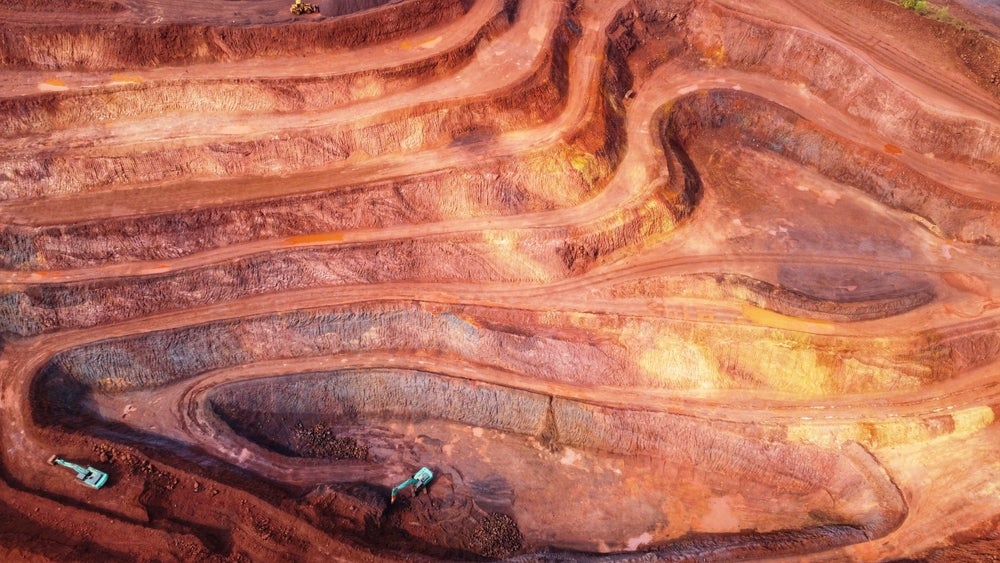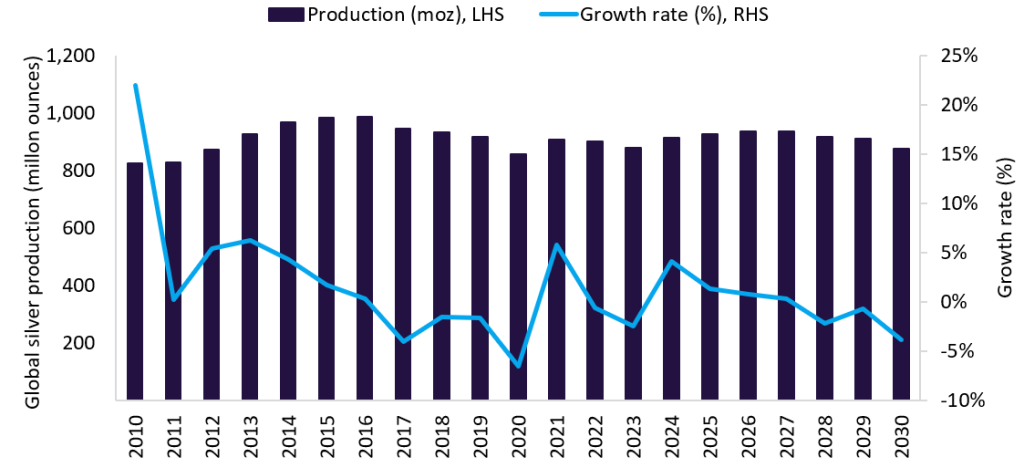
Palladium has enjoyed a strong few years. The platinum group metal has seen increasing demand and prices due to its usage in catalytic converters in cars, which are becoming mandatory as the automotive industry looks to clean up its environmental performance. Figures support this growth: global production reached 214 tonnes in 2017, compared to annual gold production of around 175 tonnes, and the metal saw its price skyrocket from $562.98 per ounce at the end of 2015 to $1,261.78 per ounce three years later, an increase of 124%.
This growth has also encouraged a number of new players to step onto the global palladium stage, with miners of all sizes suddenly interested in the metal. With the majority of the world’s palladium produced by a single company – Russia-based Norilsk Nickel, which was responsible for 41% of global production in 2017 – other miners are looking to develop new projects to challenge this monopoly.
However, the bubble could be set to burst, as the automotive industry, which has been singularly responsible for the growth in demand for palladium, might be cooling on the metal’s potential, as supply begins to catch up to demand. With new palladium mines already in the permitting, or even operating, stages, questions remain about the future of palladium, and for how much longer it will be a strong investment.
New and resurgent projects
The surge in demand for palladium has seen all manner of miners flock to the metal. Canadian miner Ivanhoe has completed a feasibility study at its Platreef mine in South Africa, a project in which it owns a 64% stake, and aims to produce 219,000 ounces of platinum a year. Similarly, the Lac Des Illes mine in Canada restarted production in 2010 after a two year hiatus due to resurgent prices. Its owner, North American Palladium, plans to continue underground operations until 2027, and produce 2.32 million ounces of the metal over the next eight years.
However, the former project is not exclusively a palladium operation, while the latter boasts a short lifespan and a history of uncertain finances; regarding new, specialised palladium mines, US-based Platinum Group Metals (PGM) is one of the companies investing the heaviest in new palladium operations.
“The Waterberg mine would be one of the largest low cost [platinum group metals] mines in the world, with palladium as the dominant metal,” said PGM CEO Michael Jones, when asked about his company’s new Waterberg mine in South Africa.
How well do you really know your competitors?
Access the most comprehensive Company Profiles on the market, powered by GlobalData. Save hours of research. Gain competitive edge.

Thank you!
Your download email will arrive shortly
Not ready to buy yet? Download a free sample
We are confident about the unique quality of our Company Profiles. However, we want you to make the most beneficial decision for your business, so we offer a free sample that you can download by submitting the below form
By GlobalDataThe numbers certainly support this claim; a PGM feasibility study, published in September, noted that 63% of the mine’s total resources were palladium, and that there would be 19.5 million ounces easily accessible as reserves. The project will cost around $874m to build and PGM expects to produce around 420,000 ounces of palladium a year, close to double that of Ivanhoe’s Platreef project, and has the financial support of industry heavyweights Implats and JOGMEC, which have purchased stakes in the mine of 15% and 13% respectively.
This support could be crucial, as PGM aims to deliver lofty financial rewards for its investors. The company expects an after-tax net present value of $982m, using spot metal prices as of 4 September 2019, and an after-tax rate of return of 20.7% at these prices. The mine is also expected to operate for a staggering 45 years, and should PGM’s predictions come true, this could be one of the most profitable mines in the sector.
New technology and old minerals
Projects like these have been able to move ahead because of what Jones calls “solid underlying demand,” influenced primarily by the automotive industry. Palladium is a key component in catalytic converters, devices which are used to filter out the more harmful gases from car exhausts, and a global shift towards cleaner, greener vehicles has helped platinum considerably.
“The increased emission standards in China, a move away from diesel in Europe – to gasoline – and large SUVs and trucks in the USA has all favoured an increase in palladium demand for catalytic converters,” said Jones.
“Going forward, hybrids are expected to grow to 20% of the power trains on the road for cars. Again these cars have small gasoline engines and palladium bearing catalytic converters. Also emission standards are getting tougher and tougher, which again increases palladium loadings per car. The future looks very strong on the demand side.”
In its 2018 annual report, chemical analysis firm Johnson Matthey noted that palladium demand had increased from 9.3 million ounces in 2016 to 10.1 million ounces in 2018, with the automotive industry driving this demand; the desire for palladium increased from 7.9 million ounces to 8.6 million ounces in the autocatalyst sector alone over this period.
Palladium has also seen increased demand due to a burgeoning recycling industry, with many car manufacturers looking to disused older vehicles, constructed before environmental considerations were so pressing, as a source of palladium. A ThermoFisher report found that in 2010, 41.2 tonnes of palladium were recovered from spent catalytic converters alone, creating a parallel industry of recycling, reprocessing and re-selling that, combined with similar efforts to use platinum and rhodium, was worth around $3bn.
The value of this industry also highlights an important element of the palladium trade, that despite growing demand, supply will continue to be limited by a relative absence of large-scale palladium mines, a situation Jones and PGM aim to fix.
“Resources in general have been underfunded for ten years,” said Jones. “In the next ten years, a lack of world class discoveries will start to have an impact on the global supply chain. The next commodity cycle will be very interesting across a host of commodities in my opinion.”
Challenges ahead
Despite the obvious potential for investments in palladium, challenges remain ahead as the mining industry looks to rapidly scale up operations to meet this growing demand. Public opinion and legislation often change faster than roads can be built and mines dug into the ground, and Jones highlighted the disparity between mining ambitious and infrastructure as a key challenge ahead.
“Challenges in the project include developing the regional infrastructure of 35km of road and 70km of power lines,” he said. “Water infrastructure also needs to be developed.”
This lack of development also means the future of palladium is particularly difficult to predict. The recent surge in demand illustrates how quickly interest in a commodity can change, and considering much of the optimism in palladium is based on this interest, companies such as PGM are hesitant to make too many predictions about the future of the mineral.
“In the longer term, out to 2030 and beyond, it is more difficult to predict,” said Jones. “If pure battery cars gain traction this would be potentially negative for the palladium market.”
With this uncertainty in mind, it is ultimately difficult to approach PGM’s Waterberg mine with anything other than scepticism. The company plans to operate the mine for 45 years, close to three times the length of time that the Lac Des Illes mine operated for before its closure; with a historical benchmark of 17 years for a large-scale palladium operation, and inherent uncertainty in the sector, PGM’s plans are nothing short of highly ambitious.
Yet Jones remains confident that a combination of technological innovation and strong demand could help palladium continue its growth.
“However, interestingly we are working with Anglo American on a lithium battery that uses palladium and platinum [which] could be a whole new area of demand,” he said. “We are still at the lab testing and patent application phase but it looks very promising.
“On the supply side, palladium-dominated deposits are very rare. Deep, narrow platinum mines that are closing have palladium as a by-product and, despite the move up in palladium prices, the platinum mines are shrinking. This tightens the palladium market even in a rising price environment. In the next ten years, things look very strong.”







